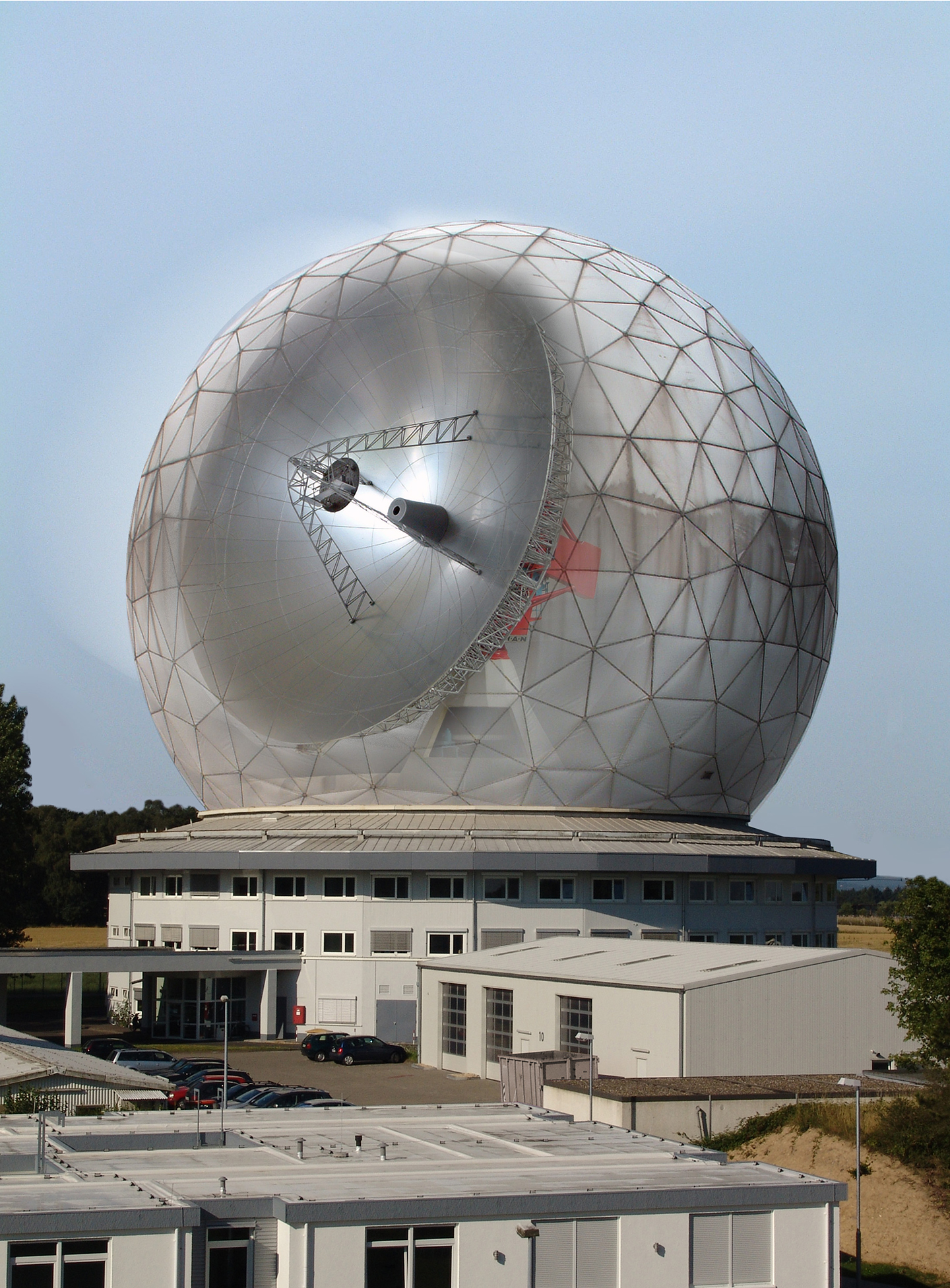Researchers at Fraunhofer FHR monitor re-entry of Chinese space station Tiangong-1
In just a few weeks from now, the Chinese space station Tiangong-1 will re-enter the Earth's atmosphere where it will to a large extent burn up. It is possible that some debris will reach the Earth's surface. Tiangong-1 is orbiting the Earth uncontrolled at a speed of approx. 29,000 km/h. Currently the prognosis relating to the time of impact currently lies within a window of several days. The scientists at Fraunhofer FHR in Wachtberg near Bonn have already been monitoring Tiangong-1 for a number of weeks with their TIRA (Tracking and Imaging Radar) system, one of the most powerful space observation radars in the world, with a view to supporting the German Space Situational Awareness Center (WRLageZ) and the ESA (European Space Agency) with their re-entry forecasts.

Following the loss of radio contact with Tiangong-1 in 2016 and due to the low orbital height, it is now inevitable that the Chinese space station will re-enter the Earth's atmosphere. With dimensions of approx. 10.4 m x 3.4 m and a weight of 8.5 tons, it can be assumed that at least parts of the space station will reach the Earth's surface. Only a few sensors worldwide are capable of measuring and imaging space objects such as Tiangong-1 with sufficient precision to acquire high quality data for re-entry forecasts. Here, Fraunhofer Institute for High Frequency Physics and Radar Techniques uses the highly sensitive TIRA system with its 34 m parabolic antenna. TIRA combines a ku-band imaging radar with an l-band tracking radar. In contrast to optical systems, radar systems such as TIRA offer decisive advantages: complete independence of local weather conditions, full operational capacity during the day or at night as well as a resolution that is independent of the distance of the object. TIRA is capable of imaging space objects with high geometric and radiometric resolution and can also measure their orbital path with the highest precision.
By precisely determining the orbital data of Tiangong-1 until it re-enters at the end of March/beginning of April 2018, FHR offers the German Space Situational Awareness Center valuable support in forecasting the time and place of re-entry. Regular checks are also carried out to establish whether or not Tiangong-1 is still fully intact. Moreover, the European Space Agency ESA/ESOC in Darmstadt has commissioned Fraunhofer FHR to determine and investigate the natural rotation of Tiangong-1. This rotation greatly influences the flight characteristics of the space station and therefore also influences the time of impact.
Due to the low orbital inclination, Tiangong-1 will re-enter the Earth's atmosphere somewhere between 43°N and 43°S and therefore does not pose a danger for Germany. A more accurate point of impact can only be estimated a few days previous to the actual event as the braking effect of the atmosphere is influenced by a number of factors. These include the natural rotation speed, the manner in which Tiangong-1 breaks up into several parts, the time of the break-up and the actual weather conditions in space. With TIRA, Fraunhofer FHR supports the German Space Situational Awareness Center and the ESA/ESOC with analyses and data and therefore contributes to the improvement of the re-entry forecast.
In its role as one of the leading European institutes, Fraunhofer Institute for High Frequency Physics and Radar Techniques FHR conducts extensive research in the area of high frequency and radar techniques. The institute's large-scale space observation radar TIRA possesses capabilities that are unique throughout Europe. The TIRA system primarily serves as a central experimental facility for the development, investigation and demonstration of radar techniques and algorithms for the detection and reconnaissance of Earth-orbiting objects – from active satellites to "space debris".